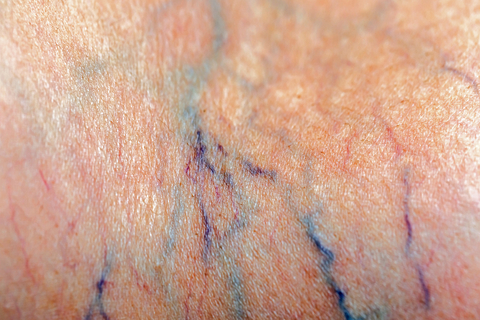23 May 2021
Are you concerned about your spider veins or varicose veins?

Photo 214265712 / Spider Veins © Pongsak Deethongngam | Dreamstime.com

Photo 88916434 / Spider Veins © Zlikovec | Dreamstime.com
What are they?
Spider veins are small dilated veins just below the skin, most commonly on the legs. These are mostly red, purple, or with a bluish tinge. Varicose veins are deeper and bigger. They are often green or purplish-blue. Spider veins are often just unsightly but do not cause any significant symptoms. Varicose veins are often unsightly with bumps or small bulges on the surface of the skin if they are significant, but they can be subtle and not visible early in their formation. They can cause itching, aching, pain and in worse cases, changes in the colour of the skin, skin irritation and ulceration.
How will I know if I only have spider veins or varicose veins as well?
An ultrasound to look at the blood flow in the veins can be organised to determine the severity of the problem.
Treatment
Depending on the severity of varicose veins, they may need to be removed to alleviate the symptoms or to prevent complications. This can be done as a clinic-based ablation procedure or it may need an operation. If you have varicose veins and spider veins, varicose veins need to be treated first. If you treat spider veins first when you have varicose veins, the treatment will be futile, as the spider veins will return. Spider veins alone often don’t need to be treated. But many people wish to have them treated to improve appearance.
Sclerotherapy
Sclerotherapy is a procedure to inject a liquid solution into the spider veins. This solution then irritates the walls of the veins causing them to collapse and constrict. It eventually forms a fibrous cord which the body breaks down and then the vein disappears. This procedure can be done in a clinic and can be repeated to improve the appearance of the legs.
If you have any questions or concerns regarding spider veins or varicose veins, please talk to your doctor.

